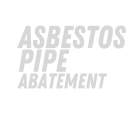The Question of New Prime or Rehabilitated Used Pipe
Whether to use new or used pipe for an application depends heavily on that application, regulations governing the project, experience of the purchaser, user, installer or engineer directing the project, and availability of used or new.
When it comes down to cases, the tube of steel is a commodity. When it is round and straight and meets the specifications, does it matter when it was purchased or how old it might be? I have on many occasions removed pipe that was sixty, seventy or eighty years of age that was in perfectly good condition and met the specifications of when it was laid. In other words, the eight inch pipe that was laid in 1920 that had a yield of 30,000 psi still has that same yield. It does not have the yield of new X42 Electric Resistance Weld line pipe that has a yield of 42,000 psi.
Sometimes it takes a cost conscious purchasing agent that has been around for a while and understands these subtle differences and characteristics to have the courage and comfort to step out and recommend or purchase a used or secondary commodity. Generally they don’t because they don’t understand or have not had the experience to give them the comfort they need.
Sometimes the engineer drawing up specs or the contractor doing the actual work will balk at using secondary material. They might balk for the same reasons; they don’t have the experience and therefore fear the unknown, or worry if they can’t place blame in case of failure. Generally, there are no guarantees or warranties in the case of used or secondary pipe.
Price is the biggest reason for purchasing used pipe. Used or secondary line pipe can be bought for 40% to 70% of the price of new pipe.
Availability is the great issue. It takes more expertise to develop lists of purveyors that are reliable and trustworthy and can supply and deliver on time. New pipe can be scheduled, but no one knows when a 12" or 16" pipeline might be removed or where.
These are some of the issues involved with the purchase and use of secondary, used or surplus line pipe as opposed to buying from your local pipe distributor.














